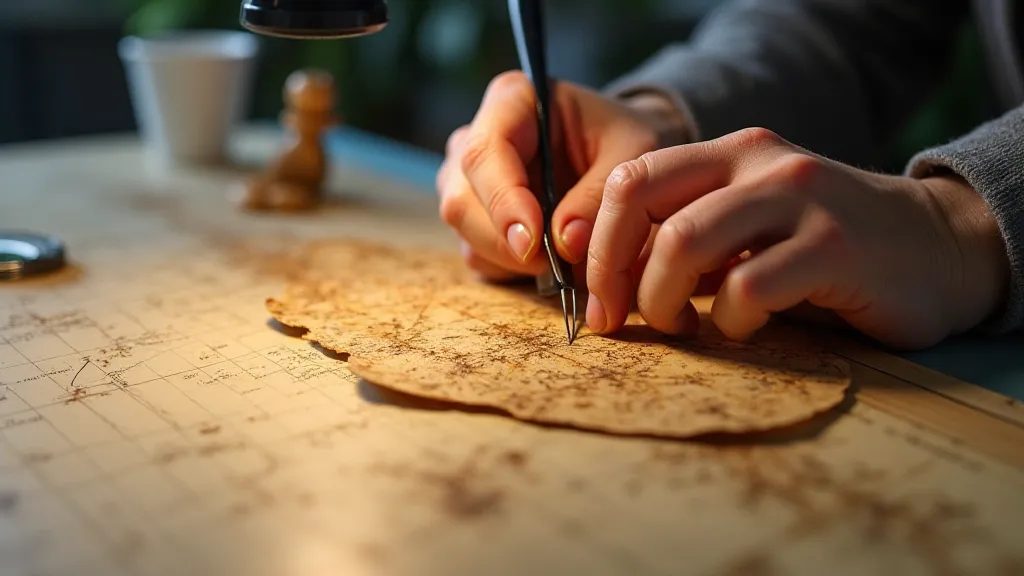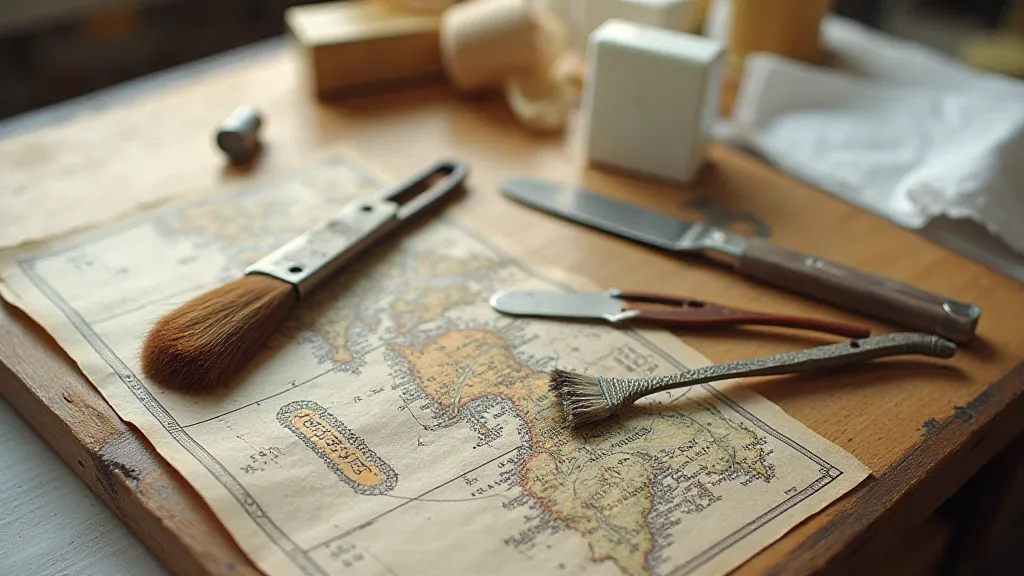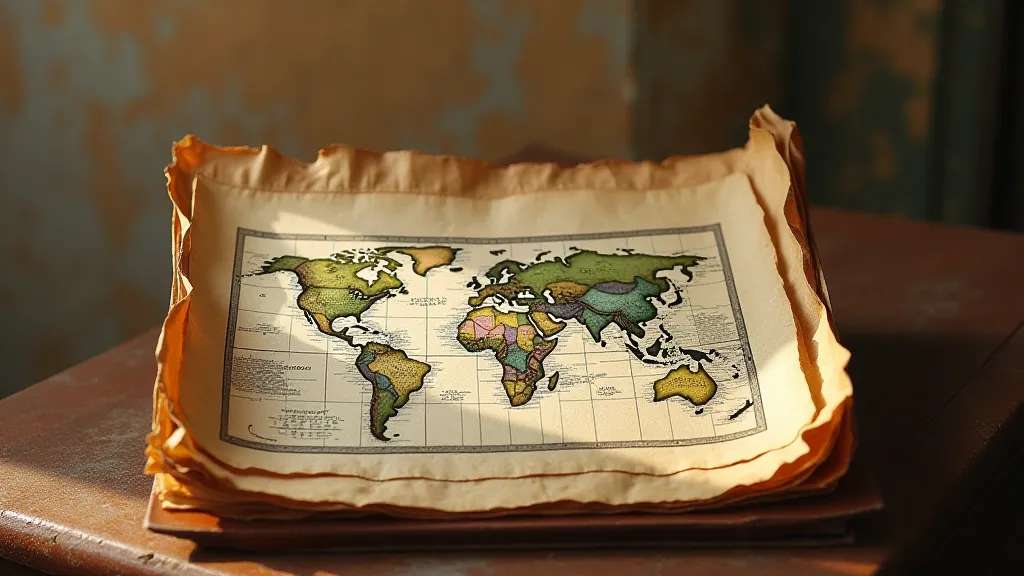Mending Fractured Worlds: The Art of Repairing Torn Antique Maps
There’s a palpable weight to holding an antique map. It’s not merely the physical weight of the paper, but the weight of history itself. Imagine the hands that drew those lines, the eyes that traced those rivers, the ships that sailed guided by those very contours. When a map is torn, it’s more than just physical damage; it's a rupture in that connection to the past, a fragmentation of a visual narrative that has endured centuries. As an antique map restoration specialist, my role isn’t just about fixing tears, but about preserving echoes of vanished worlds.
My journey into this craft began unexpectedly. I inherited my grandfather's collection of nautical charts, a remarkable archive of 18th and 19th-century exploration. One chart, depicting the coastline of Newfoundland, was particularly beautiful – but sadly, it was cleaved in two, a jagged tear bisecting a meticulously rendered harbor. I felt a profound sense of loss, not just for the visual integrity of the map, but for the story it represented. That’s when I began to learn, driven by a desire to restore not just the paper, but also the respect due to this fragile piece of history.
The Gentle Touch: Understanding the Damage
Before any repair begins, a thorough assessment is crucial. The type of paper, the nature of the tear (clean or ragged), and the surrounding inks all dictate the appropriate technique. Early paper was often made with linen or cotton rags, resulting in a surprisingly strong material, albeit brittle with age. Later, the introduction of wood pulp began to weaken the fiber, making maps more vulnerable. Acid migration, often stemming from acidic storage materials, is another common culprit, causing paper to become fragile and discolor.
A ragged tear is a more complex challenge than a clean one. It signifies movement and stress, potentially damaging the surrounding paper fibers. Often, tears aren't the result of a single event. They accumulate over time – a child’s clumsy handling, a humid basement, a careless fold and refold. The restoration process becomes less about fixing a specific break and more about stabilizing the overall condition of the map.

The Art of Japanese Tissue Repair
The foundation of most antique map repairs is the use of Japanese tissue paper. This isn't just any tissue; it’s a uniquely strong and translucent paper specifically manufactured for conservation. Its long fibers adhere remarkably well to the original paper, minimizing the visual impact of the repair while providing significant structural support. The process itself is deceptively simple, but demands incredible precision and a steady hand.
Using finely diluted wheat starch paste – an archival adhesive – the Japanese tissue is applied over the verso (back) of the tear. The paste’s viscosity is crucial; too thick, and it will bleed through the paper; too thin, and it won't provide adequate adhesion. Slowly, meticulously, the edges of the tear are brought together, guided by the original fold lines, if they exist. Air bubbles are the enemy, requiring patient coaxing with a soft brush. The goal isn't to perfectly recreate the original condition – that’s often impossible – but to provide stable support and prevent further deterioration.
Beyond the Basics: Consolidation and Complex Repairs
Sometimes, the damage is more extensive than a simple tear. Fragmented paper, areas of loss, and crumbling edges require more advanced techniques. Paper consolidation involves the application of a consolidant – a carefully selected adhesive – to strengthen weakened paper fibers. This is a delicate procedure, as the consolidant must be compatible with the original paper and inks, and must not alter the map's appearance. Ethyl cellulose is a common choice, but its application requires specialized training and equipment.
Lost areas, where portions of the map are missing, present a unique challenge. Historically, archivists employed various approaches, from inpainting with watercolors to painstakingly recreating missing sections. However, modern conservation ethics emphasize minimal intervention. Today, the focus is on stabilizing the existing paper and documenting the loss, rather than attempting to replace what is gone. This transparency is vital for maintaining the map's historical integrity and allows future researchers to understand the extent of the damage.

The Impact of Acid and Deacidification Techniques
Acidic paper is a constant threat to antique maps. Exposure to acidic storage materials – cardboard, acidic paper, even certain types of wood – causes the paper to yellow, become brittle, and ultimately disintegrate. Deacidification aims to neutralize these acids, slowing down the deterioration process. This can be achieved through various methods, including aqueous deacidification (washing) or non-aqueous deacidification (using solvents).
Aqueous deacidification is particularly effective, but it requires extreme caution. The ink and paper may be sensitive to water, resulting in color bleeding or paper distortion. Non-aqueous deacidification, while gentler, is often less effective and requires specialized solvents and safety precautions. Choosing the right deacidification method depends on a thorough assessment of the map's condition and a deep understanding of its materials.
Folding and Preservation: Ensuring Longevity
Many antique maps were originally folded, designed to be easily transported and stored. Repeated folding and unfolding can weaken the paper along the fold lines, creating stress fractures and increasing the risk of tearing. Careful refolding, following the original fold lines, is an important aspect of preservation. The use of acid-free folders and archival storage materials further protects the map from damage.
Ultimately, the goal of antique map restoration isn't just to repair the physical damage, but to ensure the map’s survival for generations to come. It's a responsibility I take incredibly seriously, recognizing the profound connection these maps offer to our past. Each tear mended, each fold stabilized, is a small act of defiance against the relentless march of time, a reaffirmation of the enduring power of human exploration and the artistry of cartography.






